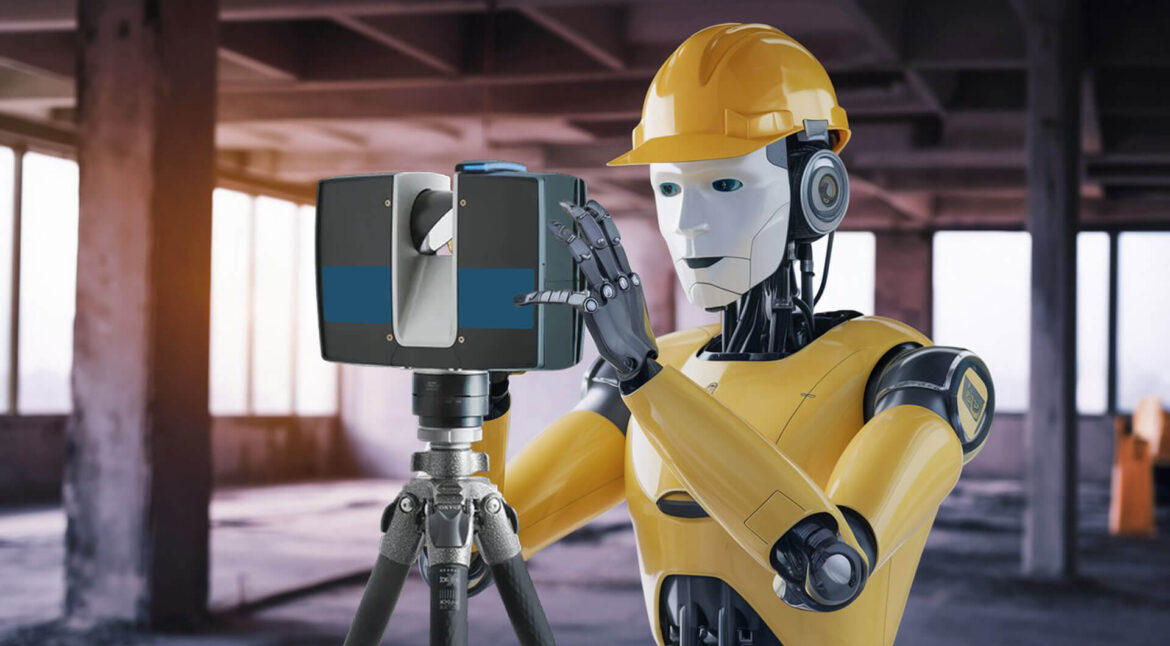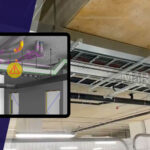An accurate and efficient way of incorporating existing buildings into digital workflows is by using Scan-to-BIM, which represents the generation of BIM models from 3D laser scans. Historically, Scan-to-BIM struggled hard to ensure a high level of accuracy and details in an efficient manner. This is being changed by Artificial Intelligence (AI). The potentiality of AI in processing immense amounts of data, pattern recognition, as well as decision-making, is giving more power to Scan to BIM. To overcome traditional limitations, Point Cloud to BIM Modeling imposes on AEC professionals peculiarly with regards to the point cloud dataset for BIM model creation, AI algorithms are applied which improve significantly accuracy, speed and efficiency while creating BIM models. This article will explain how artificial intelligence is shaping Scan to BIM services with a specific interest in machine learning and other ways that are changing the development of accurate and detailed BIM models from real-world scans.
Data Preprocessing with AI
Noise, outliers and redundancies in BIM laser scanning data can interfere with the accuracy of Building Information Modeling (BIM) models, which are often disorganized and extensive. AI-powered data preparation measures help in sanitizing and setting up this information for examination. An important step of this process is noise reduction which involves removing unnecessary points from the data to improve the signal-to-noise ratio. Another role played by outlier elimination is to identify spots that greatly deviate from predicted patterns thereby leading to a more accurate representation of the structure’s geometry.
Segmentation is another important approach where points are grouped into meaningful clusters based on spatial proximity, color or other attributes. This helps in identifying individual objects needed for BIM modeling like walls, floors ceilings and structural components. The employment of AI during AEC data preprocessing allows point cloud quality improvement as well as dependability, which lays a solid ground for geometric data extraction as well as high-fidelity BIM model creation.
| AI Technique | Description | Benefits for Scan to BIM |
| Noise Reduction | Algorithms identify and remove extraneous points from raw scan data caused by errors or environmental factors. | Improves data quality, leading to more accurate BIM models. |
| Outlier Removal | AI detects and eliminates points that significantly deviate from expected patterns. | Enhances data integrity and ensures a more precise representation of building geometry. |
| Segmentation | Automatically groups points into meaningful clusters based on spatial proximity, color, or other attributes. | Identifies distinct objects like walls, floors, and ceilings, crucial for BIM modeling. |
Feature Extraction and Recognition
From the old tedious and error-prone process of defining meaningful features from point cloud data, AI has helped in automating that. This may involve classifying wall, floor, ceiling and window points with each other as well as columns and beams among others using machine learning algorithms. Deep learning, a subfield of machine learning, has gained success in feature extraction for Structure to Building by analyzing spatial patterns of points within a local neighborhood.
For instance, Convolutional neural networks (CNNs) can identify complex shapes and geometries from the way they are distributed within space, something rule-based methods cannot deal with. Semantic segmentation is assigning a semantic label to every point in the point cloud making it possible to comprehend completely the building’s layout and composition. By doing this, object recognition algorithms can easily locate specific objects in the point clouds which is useful for such purposes as asset management, facility planning or maintenance operation. As such, by automating feature extraction and recognition processes AI drastically speeds up the Scan to BIM workflow reducing dependence on manual work while increasing BIM model consistency and accuracy.
| AI Technique | Description | Benefits for Scan to BIM |
| Feature Classification | Machine learning algorithms categorize points into different classes (e.g., walls, doors, windows). | Automates feature extraction, improving speed and consistency of BIM model generation. |
| Deep Learning (CNNs) | Analyze spatial patterns within local neighborhoods to identify specific features and complex shapes. | Enables detection of intricate details that are difficult to capture with traditional methods. |
| Semantic Segmentation | Assigns a semantic label (e.g., “wall,” “window”) to each point, providing a comprehensive understanding of building layout. | Facilitates accurate BIM model generation and enriches the model with semantic information |
| Object Recognition | Identifies and localizes specific objects within the point cloud (e.g., HVAC systems, electrical panels). | Valuable for asset management, facility planning, and maintenance operations. |
Geometric Modeling and Error Detection
Scanned architecture modeling of the building is simplified and improved by AI through generating 3D models from classified point cloud data. These models capture crucial geometrical building information required for BIM modeling. Nonetheless, first geometric models could have inconsistencies, inaccuracies or deviations from the real structure because of noise, occlusion or other factors. AI can be used to perfect these models via a geometric optimization process.
| AI Technique | Description | Benefits for Scan to BIM |
| Geometric Optimization | Iteratively adjusts model parameters to minimize errors and improve fit to point cloud data. | Ensures geometric accuracy, consistency, and adherence to real-world constraints. |
| Clash Detection | Automatically identifies conflicts or interferences between building elements. | Enables early detection and resolution of design issues, reducing rework and delays. |
| Model Validation | Compares generated BIM model with design intent or reference data to identify discrepancies. | Enhances quality assurance and ensures model accuracy. |
The Scan to BIM process is prone to errors which can only be detected and rectified by AI algorithms that ensure the accuracy and reliability of BIM models. Discrepancy detection is one type of error where there are clashes between different building components in a design. When geometric models are automatically analyzed using artificial intelligence, clash prediction programs may show possible clashes which designers or engineers have to take into account at an early stage of their work. Furthermore, it can be used in model validation for comparing generated BIM with either intended design or reference benchmark data to reveal any non-congruences that should be further examined or corrected.
Related blog Scan to BIM Introduction – From technology to the BIM model
AI enhances quality assurance procedures in point cloud to BIM by automating error detection and correction processes, thus resulting in accurate, standardized, and error-free final BIMs which minimize costly rework and delays during construction.
Conclusion
The AEC industry is undergoing a revolution as AI working together with Scan to BIM is enhancing data preprocessing, feature extraction, geometric modeling and error detection. This speeds up project timelines and reduces costs by enabling professionals to obtain accurate BIM models which have been made from real-life scans. Moreover, it also improves decision-making, risk mitigation and collaboration in the building lifecycle. The future of Scan-to-BIM merged with AI advances appears promising with complex solutions that redefine building documentation, design and management.



